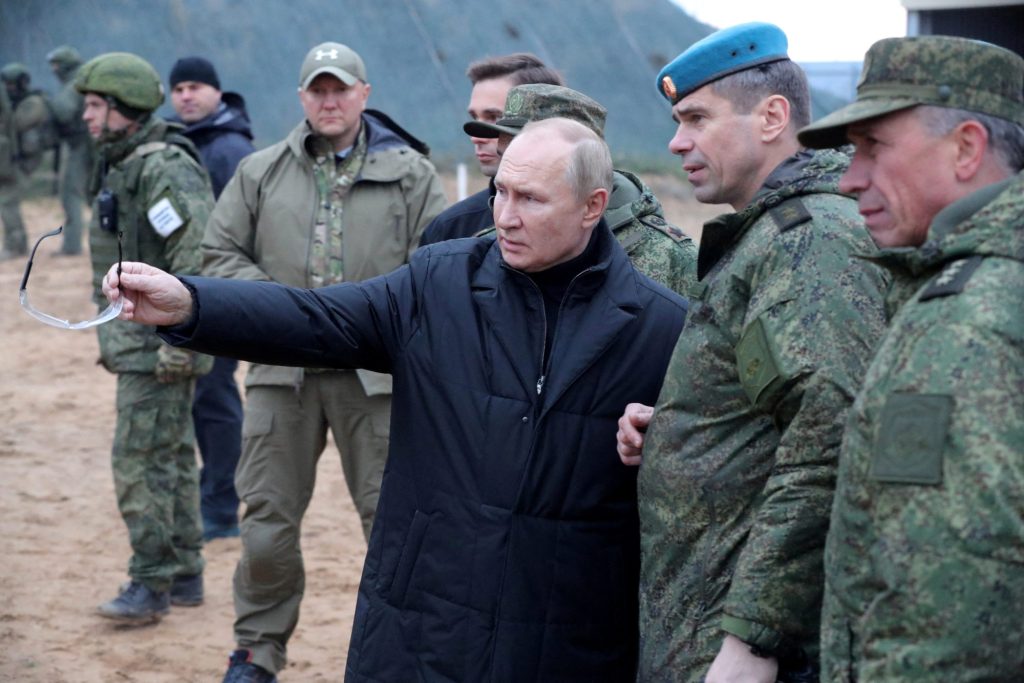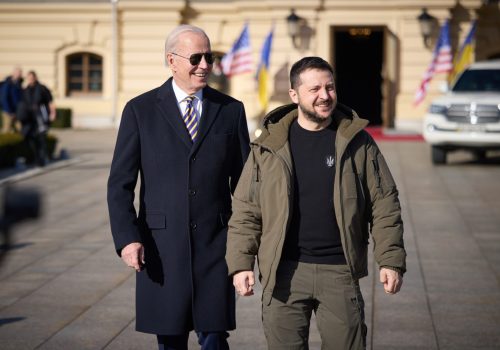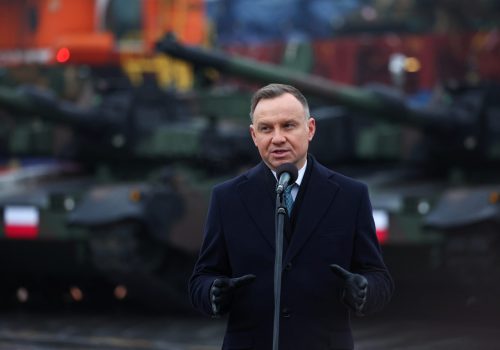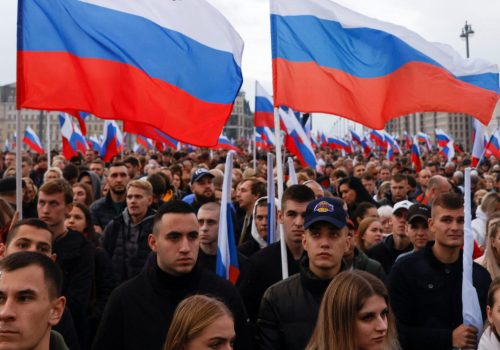A significant part of America’s foreign policy establishment, in both the executive and legislative branches as well as the think tank community, embraces a “China First” perspective that argues against prioritizing the war in Ukraine and, more broadly, NATO and Europe. National Security and National Defense strategies describe China as the “pacing” threat, while many argue that US foreign policy and national security priorities should be focused squarely on the Indo-Pacific, leaving “free-loading” Europeans to largely fend for themselves.
This thinking is influenced in part by the Obama administration’s pivot to Asia, but also by the Trump administration’s severe criticism of NATO and the EU, and by former Obama administration officials now serving in the Biden administration. In fact, NATO and Europe remain essential to US prosperity and security, while success in Ukraine is inextricably tied to a stable international order. China must surely be a high priority. But the transatlantic relationship is just as important.
From a national security perspective, the need to deter and contain Russia remains paramount. Russia retains by far the world’s largest nuclear arsenal and often threatens to use it. Unlike China, Russia is engaged in active hostilities against democratic states that directly threaten the global economy, international trade, energy prices, and global food security.
Russian success in Ukraine would almost certainly lead to further aggression in the Black Sea, in Moldova, and most alarmingly, in the Baltic states as the Kremlin seeks to reintegrate former imperial territories. In numerous instances since 2008, Russia has used force to alter borders, committing egregious human rights violations and war crimes along the way. By deliberately targeting Ukrainian cities and the civilian population while conducting large-scale forced deportations, Russia has placed itself far outside international law and norms. It is a pariah state that must be confronted.
Nor is characterizing America’s NATO allies as “free riders” fair or balanced. In 2022, NATO allies (excluding the US) spent in excess of $325 billion on defense. This represented more than five times Russian defense spending and was the eighth consecutive year of defense spending increases. Contrary to popular belief, the US pays only 16.33% of NATO’s common operating budget, the same rate as Germany. While it is true that US defense spending is about twice that of Europe, most of that expenditure is not focused in Europe, where the US military footprint is quite small.
Stay updated
As the world watches the Russian invasion of Ukraine unfold, UkraineAlert delivers the best Atlantic Council expert insight and analysis on Ukraine twice a week directly to your inbox.
Years of harsh criticism of our NATO allies contributes to an unfortunate perception that is harmful to transatlantic security and to alliance cohesion. The true picture is quite different. NATO member states contributed billions in funding and substantial troop contingents to Afghanistan and to the counter-ISIS campaign over two decades, suffering more than a thousand fatalities. The US enjoys forward basing and overflight rights as well as valuable intelligence-sharing that yield national security advantages reaching far beyond Europe.
Nor does the US military presence in Europe prevent the ability to deter or defend against Chinese aggression in the Indo-Pacific region. Only five of America’s 31 active combat brigades are currently on the ground in Europe, leaving the remainder for contingencies in Asia along with 27 National Guard brigades and the entire US Marine Corps. No bomber squadrons and only seven of the US Air Force’s 56 fighter squadrons are based in Europe, while no US Navy or USMC fighter squadrons are based there.
The ”China First” community also makes its case by overstating Chinese capabilities and understating America’s. The naval balance of forces is a case in point. US admirals in testimony before Congress often cite China’s lead in the number of surface warships without noting that most are smaller patrol combatants poorly suited for “blue water” operations. In total tonnage, numbers of missile launchers, fleet carriers, nuclear attack submarines, and many other categories, the US Navy is far superior, even without including powerful navies like the Japanese, Indian, or Australian.
The same is true in the air. China’s air force is far smaller, older, and weaker than the US Air Force, with few fifth generation aircraft in contrast to America’s more than 500. The US lead in strategic airlift, tankers, and large unmanned aircraft is even more pronounced. Add in US naval and Marine aviation along with the air forces of regional allies, and the US advantage becomes overwhelming.
Should China seek to expand its territory through force, it is surrounded by militarily significant states including India, South Korea, Vietnam, Japan, Australia, the Philippines, and others who together represent a formidable potential coalition. For its part, China has virtually no allies. It lacks the strategic air, sealift, and theater logistics to project its military forces very far from its borders.
Largely dependent on imported energy and food supplies, China is extremely vulnerable to blockade in time of war. In short, the Chinese military threat is often exaggerated, while US military strength is undervalued. As the world’s greatest military power, with NATO partners and allies that together constitute almost 70% of the world’s GDP and military strength, the United States is well able to cope with both China and Russia.
Eurasia Center events

Nor is China America’s most important economic concern. In economic terms, the US-Europe relationship is crucial to American prosperity. US goods and services trade with the EU totaled an estimated $1.2 trillion in 2021, compared to $657 billion with China. While Canada and Mexico are America’s largest individual trading partners, the US-EU trade and investment relationship is the largest in the world.
The benefits of close transatlantic ties also play out politically. Nuclear powers France and the UK join the US as permanent members of the UN Security Council to balance out China and Russia, while European support in the UN General Assembly and in international organizations like the G7, the International Monetary Fund, and the World Bank plays a critical role in advancing democracy and the rule of law. In the global competition between democratic and autocratic states, Europe is a key and indispensable player.
Prioritizing China over Europe plays out in Ukraine through a policy that seeks to provide Ukraine with enough assistance to “negotiate from a position of strength,” but not to win. US support for Ukraine to date has been substantial, totaling some $30 billion, but President Biden has so far withheld the combat aircraft and long-ranged rocket artillery that Ukraine needs in order to liberate the entire country from Russian occupation.
This in turn provides powers like Germany, Italy, and Spain with cover for less than full-throated support, while others like Poland and the Baltic states deliver far more on a per capita basis. By carefully modulating the kind of aid Ukraine receives, the US insures Kyiv against defeat but denies it the capabilities needed to prevail. A frozen conflict that carries on indefinitely is thus far more likely.
Since 1945, the US has played the role of guarantor of an international order that has fueled global prosperity and helped to keep billions safer and more free. Today, that order is challenged not only by potential Chinese aggression, but by actual Russian aggression carried out on a massive scale. Facing down these challenges is not a binary choice. The right choice is to give Ukraine the tools it needs to win. That outcome will return stability and security to Europe for a generation, and perhaps forever. We can be sure that China would be watching and learning as well.
R.D. Hooker Jr. is a nonresident senior fellow with the Atlantic Council. He previously served as Dean of the NATO Defense College and as Special Assistant to the US President and Senior Director for Europe and Russia with the National Security Council.
Further reading
The views expressed in UkraineAlert are solely those of the authors and do not necessarily reflect the views of the Atlantic Council, its staff, or its supporters.

The Eurasia Center’s mission is to enhance transatlantic cooperation in promoting stability, democratic values and prosperity in Eurasia, from Eastern Europe and Turkey in the West to the Caucasus, Russia and Central Asia in the East.
Follow us on social media
and support our work
Image: Russian President Vladimir Putin talks with Russian army commanders. October 20, 2022. (Sputnik/Mikhail Klimentyev/Kremlin via REUTERS)




